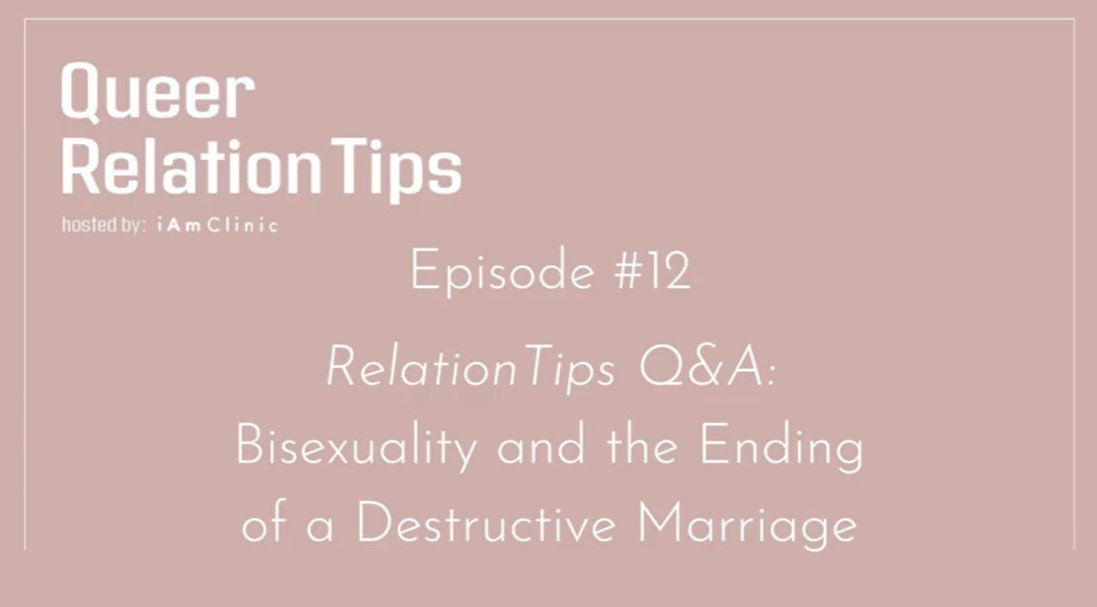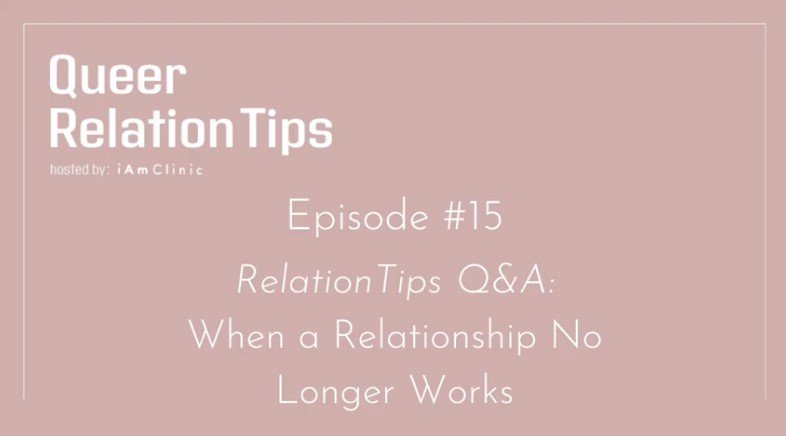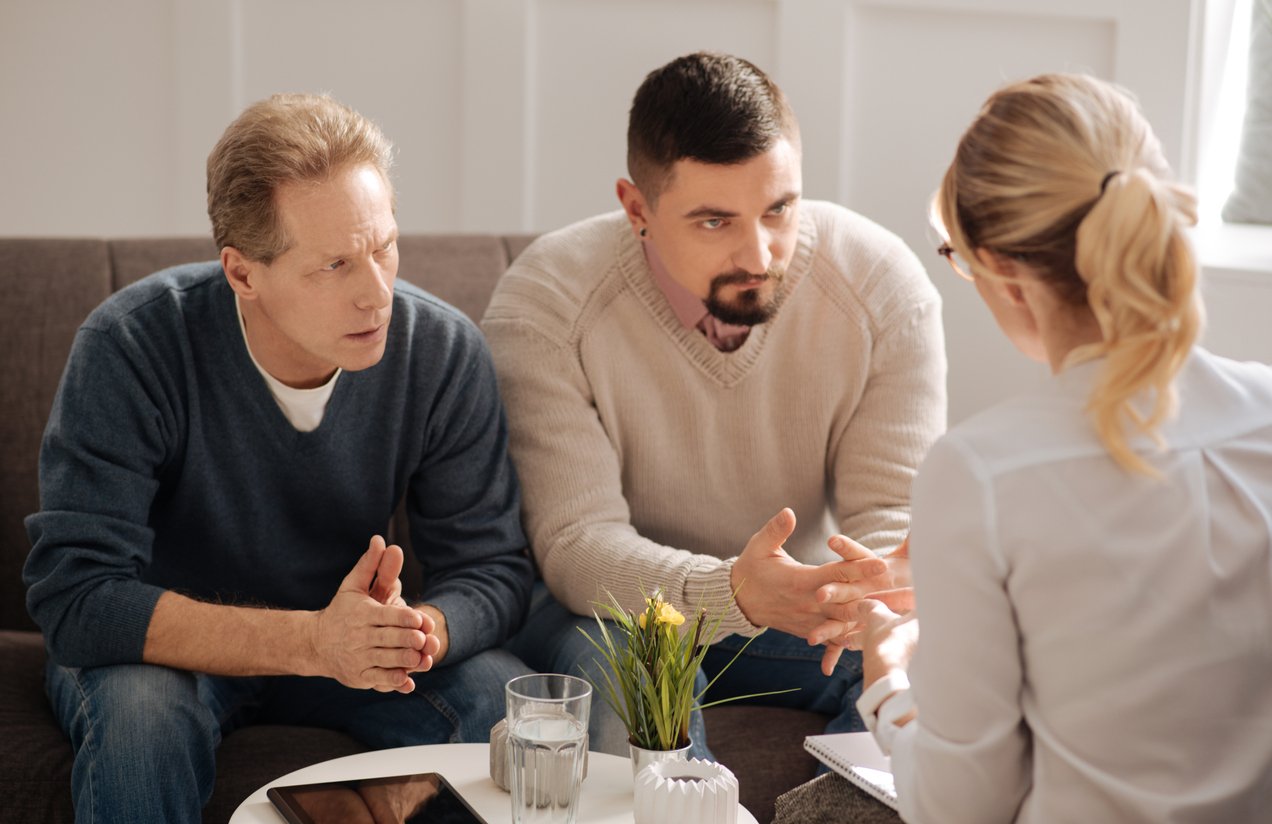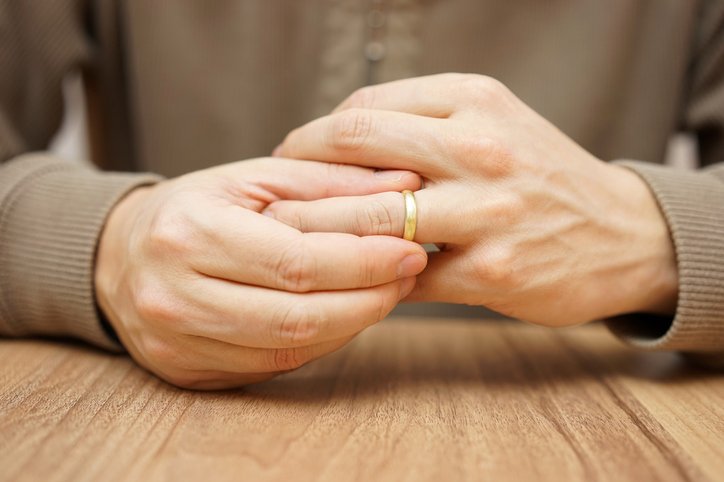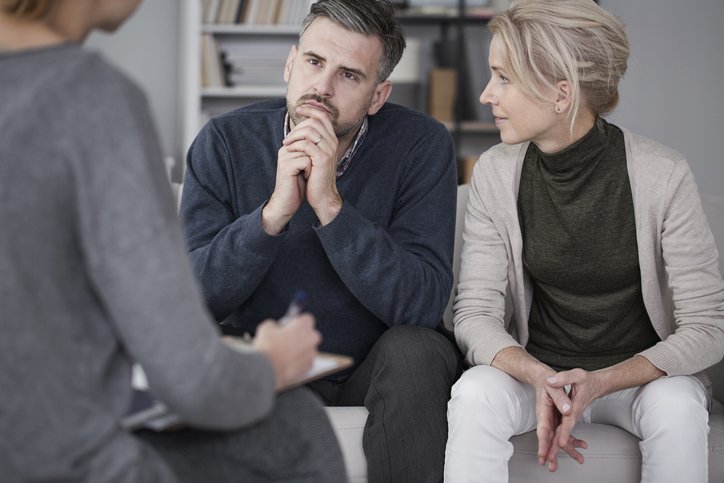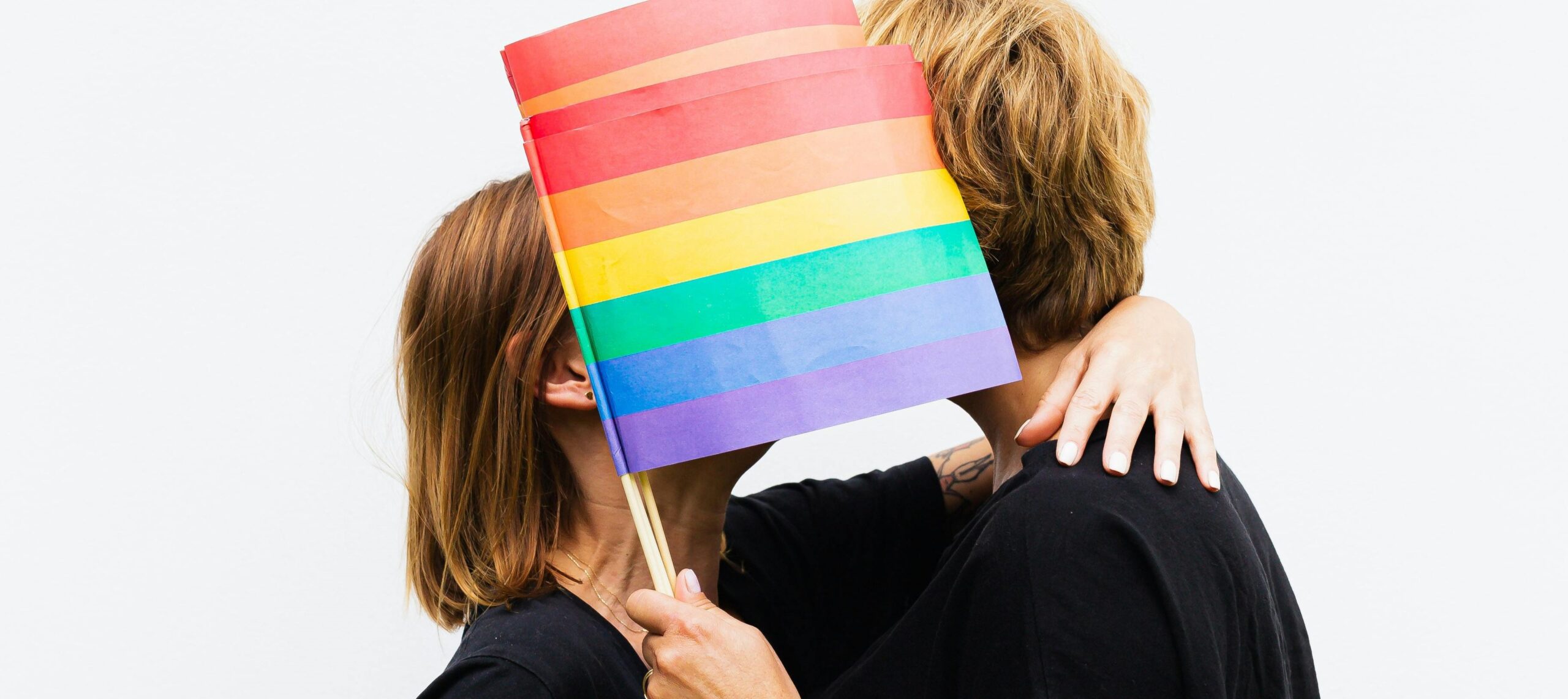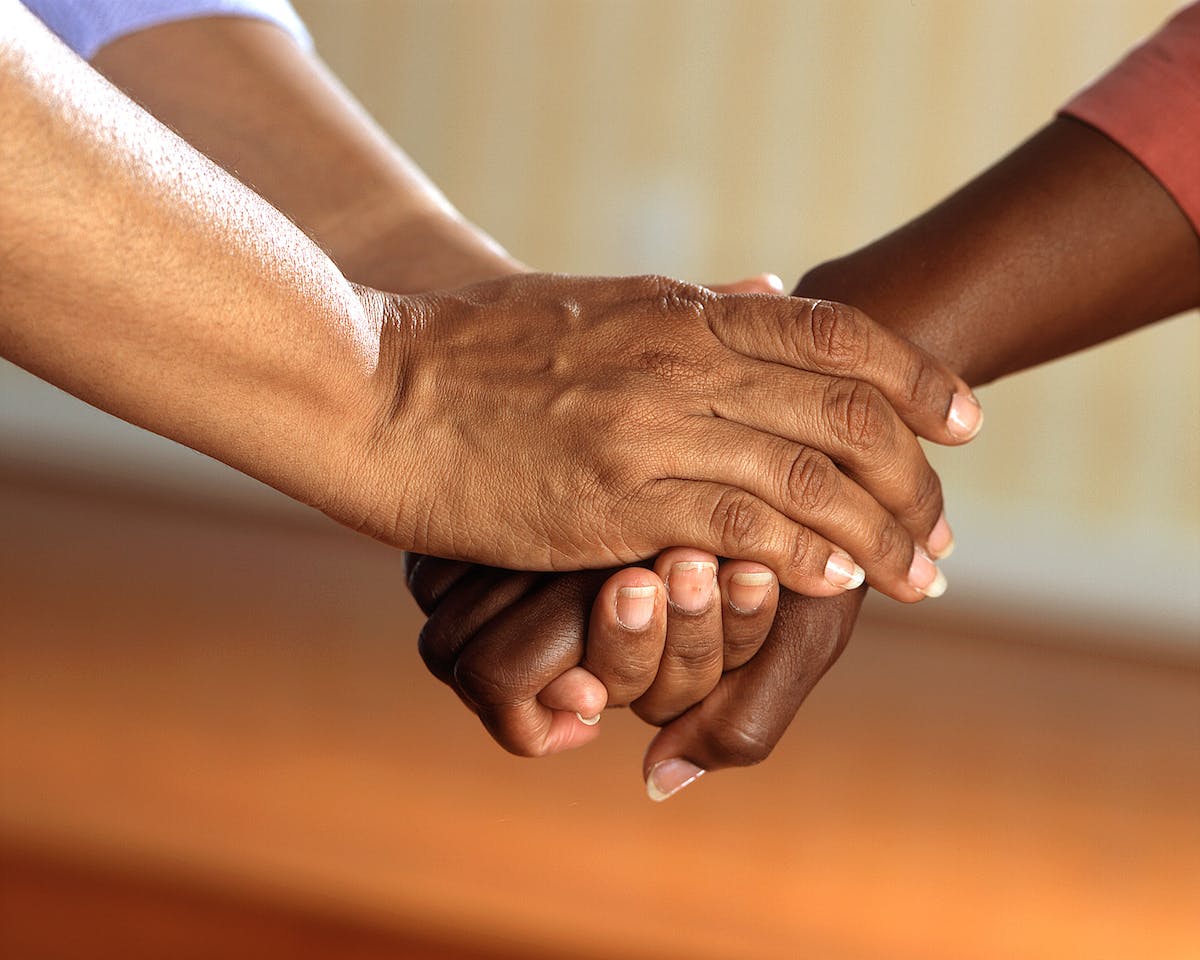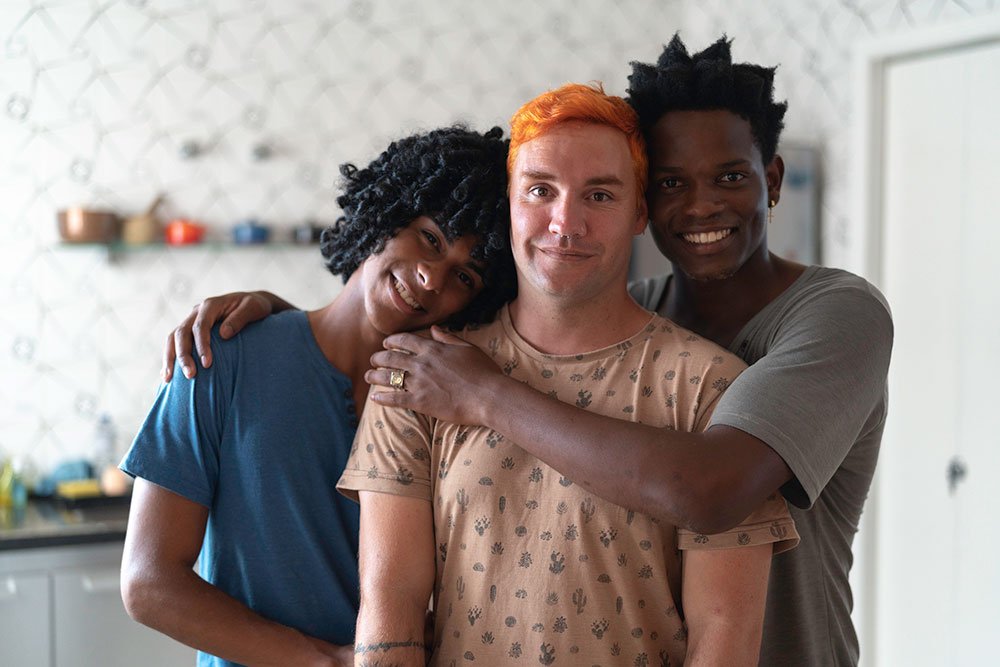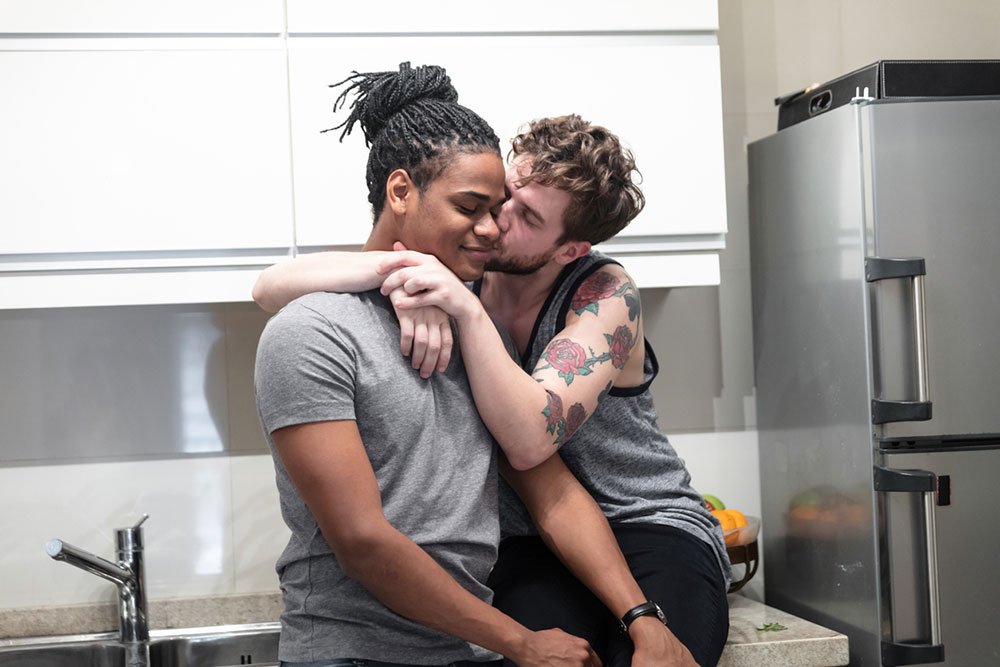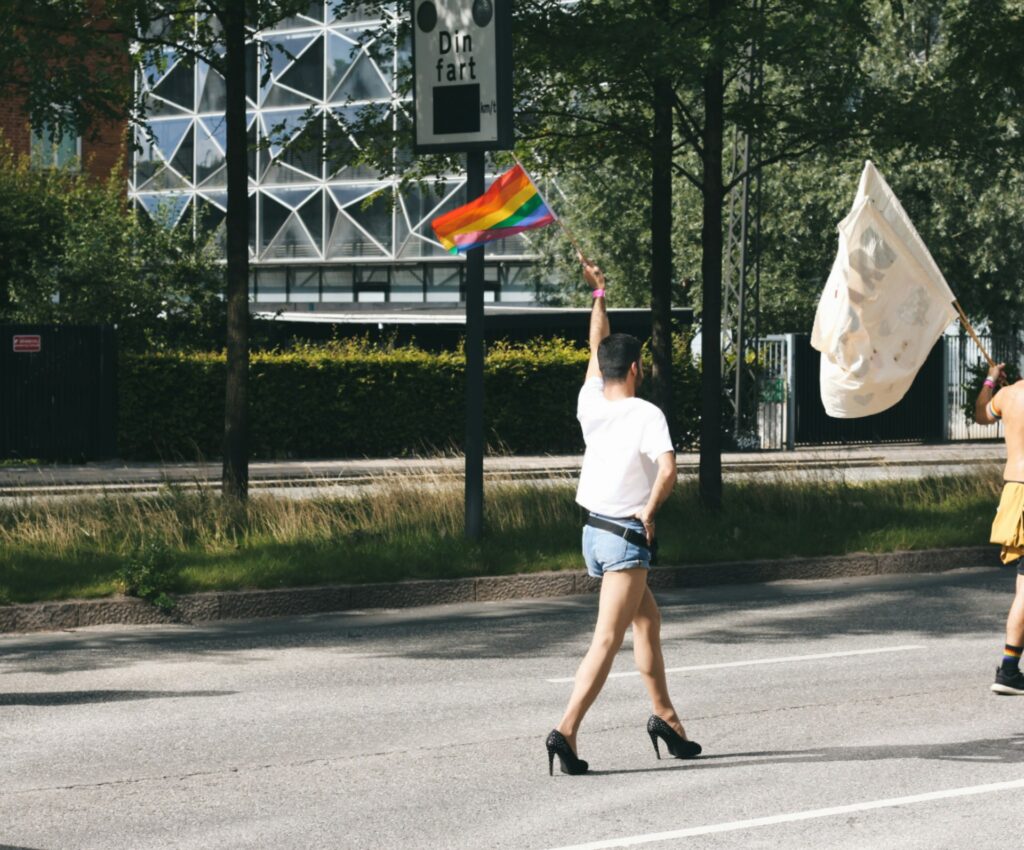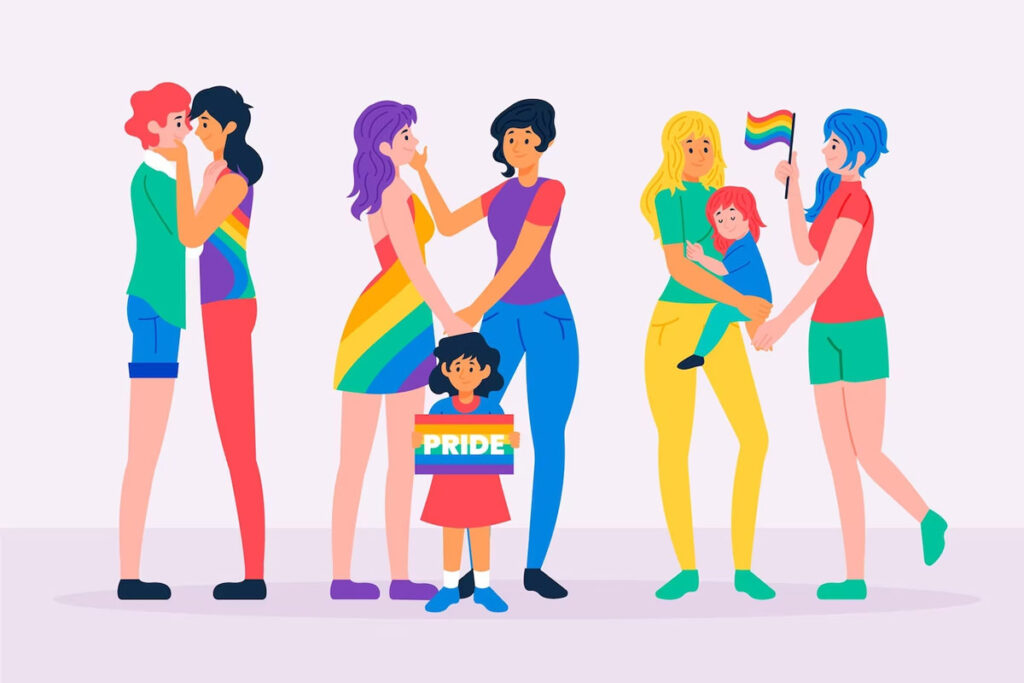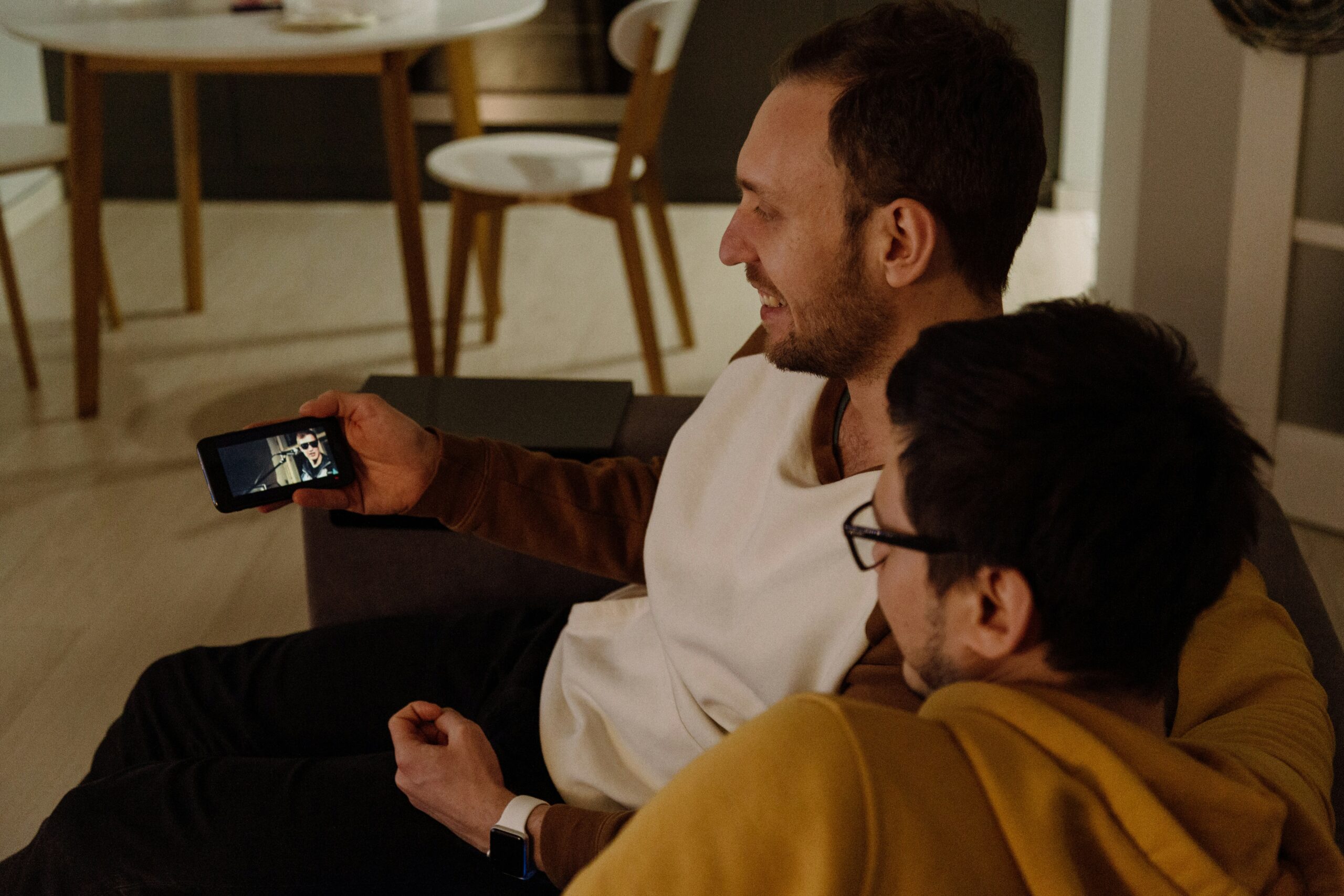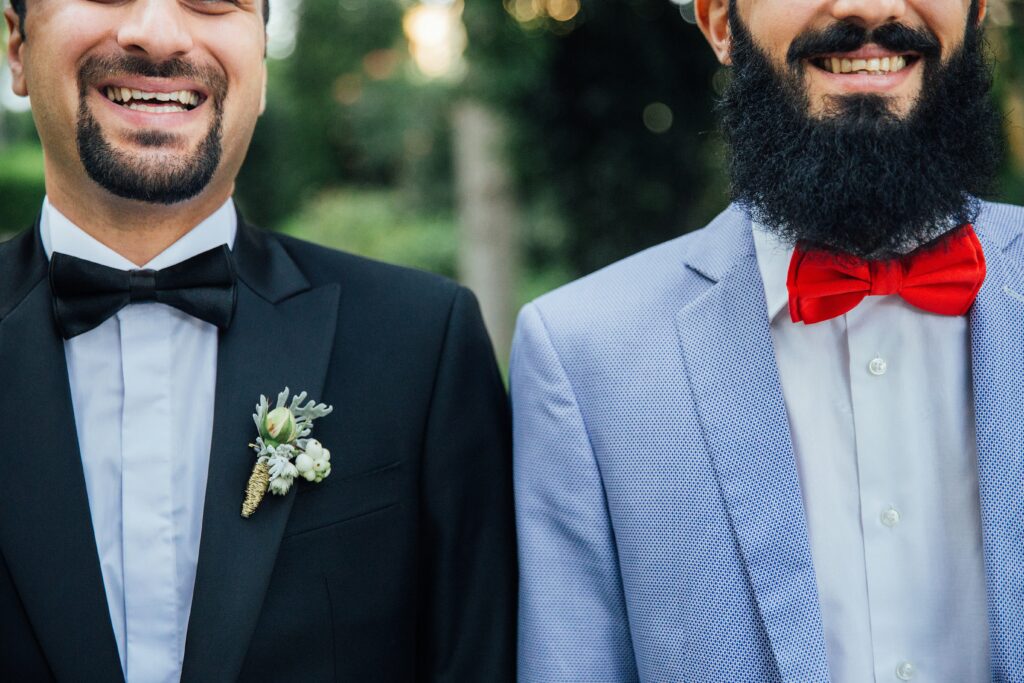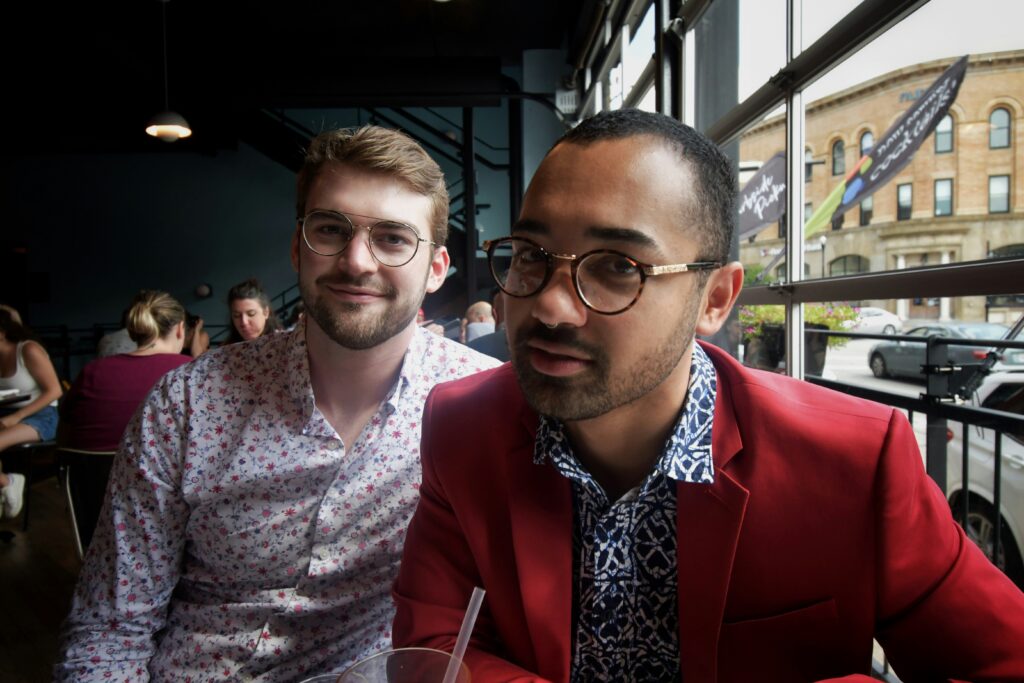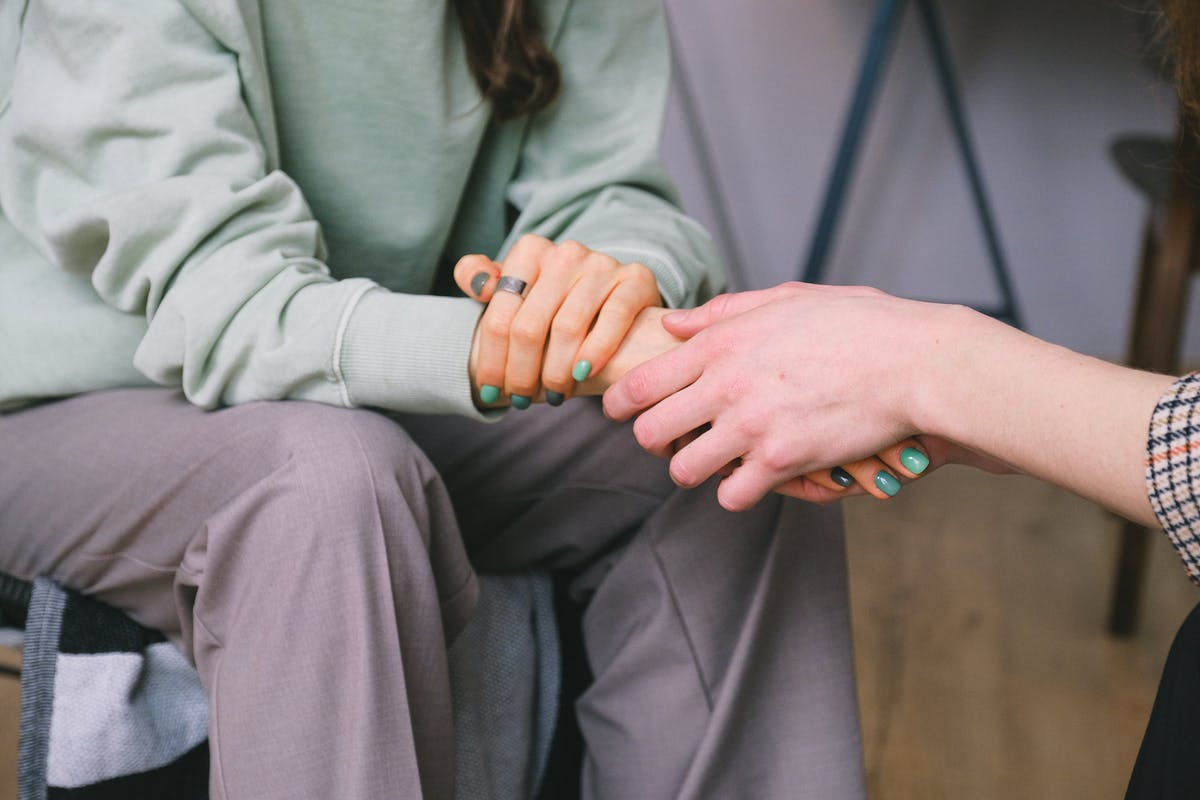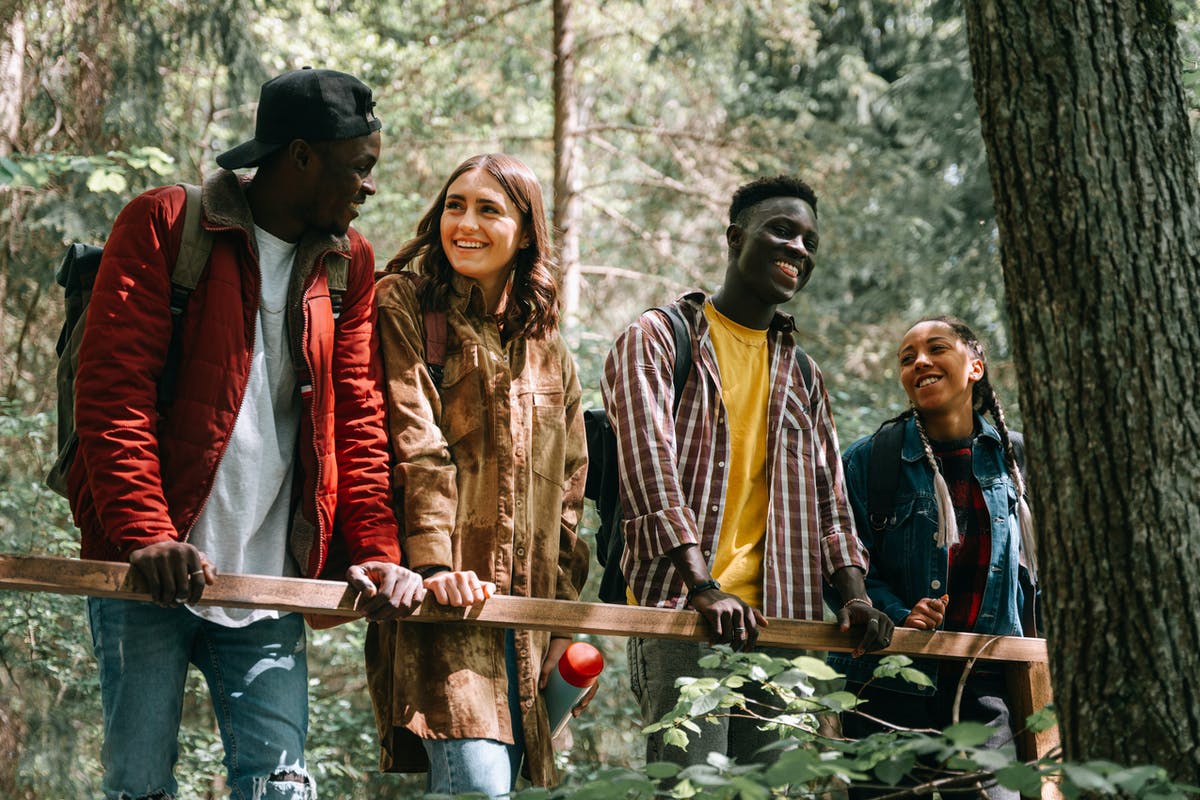Episode Summary
Many people judge and hate on bisexuality, claiming that bisexual people just can’t make up their mind or that maybe they’re just too scared to fully come out. Queer people often judge the bisexual person and their sexual orientation, disregarding the complexity of the spectrum that we laud and celebrate as LGBTQIA+ people. Learn more about faith counseling
Today’s guest clearly articulates, with her many examples and questions, the plight many bisexual people encounter.
She tells a story of being married to a man and after her former husband’s addictions and trauma settled in, she decided to move on only to find that she was challenged by queer women.
Underneath her tales of marriage, dating, and trauma, you can hear a subtle yearning to trust herself and, oddly enough, a yearning to trust love, even if the data for what is trustworthy was with her the entire time.
TRIGGER WARNING: Trauma is talked about during this episode. At the end of the episode, Isaac give some helpful remarks when dealing with and/or recovering from trauma.
Navigating the Spectrum: Embracing Bisexuality and Queer Identity
In the LGBTQ+ community, embracing one’s identity and navigating relationships can be both liberating and challenging. For individuals who identify as bisexual or pansexual, the journey to self-discovery and acceptance can be particularly complex. In this blog, we delve into the experiences of a person who identifies as bi and explore the unique struggles and joys they encountered while coming to terms with their sexuality. We also discuss the importance of belonging to oneself and the broader queer community, as well as the need to break free from societal norms that stifle authentic self-expression.
Growing Up in a Conservative Household
Our guest’s story starts in a conservative household, where the messages about the body and sexuality were fraught with shame and judgment. Being raised with the idea that one’s body should conform to certain standards to be considered %22good%22 or %22pure%22 left deep scars and hindered their ability to explore and understand their own desires. The shame surrounding their body and desires masked their true identity for many years, making it difficult to embrace their bisexuality.
Discovering Bisexuality within a Heterosexual Marriage
It was only after being married to a man that our guest discovered their bisexuality. A simple conversation revealed that they had feelings for both men and women, a realization that surprised them both. This internal struggle to accept their own sexuality within the confines of a heterosexual marriage exemplifies the confusion and complexity many bisexual individuals face in a world that often insists on binary identities.
Challenging Bisexual Stereotypes
Society has long perpetuated stereotypes about bisexuality, often branding bisexual individuals as indecisive or afraid to fully come out. These harmful misconceptions have led to judgment and prejudice within the LGBTQ+ community itself. Our guest shares their experiences of encountering distrust and skepticism from queer women because of their bisexuality. They discuss the importance of understanding the full spectrum of LGBTQ+ identities and rejecting judgments based on rigid notions of sexuality.
Religion and Sexuality: The Internal Struggle
Religion can play a significant role in shaping an individual’s view of their sexuality, often causing confusion and internal conflict. Our guest opens up about growing up in a conservative religious environment that portrayed desires as sinful and shamed them for their own bodily experiences. The struggle to reconcile their faith with their bisexuality became a significant source of inner turmoil and delayed their journey of self-discovery.
Belonging to Oneself: The Journey to Self-Acceptance
Through self-reflection and inner work, our guest began to dismantle the harmful messages about their body and desires. They learned the importance of belonging to oneself first and foremost, embracing their true identity regardless of external expectations. The journey to self-acceptance has been a challenging one, but it allowed them to take the courageous step of coming out to their family.
Challenges of Dating and Belonging to the LGBTQ+ Community
Navigating relationships within the LGBTQ+ community can bring its own set of challenges, especially when one identifies as bi or pansexual. Our guest shares their experiences of feeling judged and pressured within the lesbian community, as they were seen as %22not gay enough%22 due to their past heterosexual relationships. They discuss the need to redefine cultural norms within the queer community, highlighting the importance of emotional bonding and acceptance rather than just sexual orientation.
Conclusion: Embracing the Spectrum of Queer Identity
The journey of embracing bisexuality and queer identity is filled with introspection, acceptance, and self-discovery. Breaking free from societal norms and stereotypes is essential for fostering a sense of belonging within oneself and the LGBTQ+ community. As we strive to create an inclusive and supportive environment, we must celebrate and honor the diverse identities and experiences that make up the vibrant tapestry of queer life.
In conclusion, let us remember that each person’s journey is unique and valid. By understanding and supporting one another, we can create a world where everyone feels seen, heard, and loved for who they truly are. As we continue to explore and celebrate the richness of queer identities, let us also pave the way for future generations to embrace their true selves without fear or judgment. Together, we can build a more compassionate and accepting world for all members of the LGBTQ+ community.
” content_phone=”
Navigating the Spectrum: Embracing Bisexuality and Queer Identity
In the LGBTQ+ community, embracing one’s identity and navigating relationships can be both liberating and challenging. For individuals who identify as bisexual or pansexual, the journey to self-discovery and acceptance can be particularly complex. In this blog, we delve into the experiences of a person who identifies as bi and explore the unique struggles and joys they encountered while coming to terms with their sexuality. We also discuss the importance of belonging to oneself and the broader queer community, as well as the need to break free from societal norms that stifle authentic self-expression.
Growing Up in a Conservative Household
Our guest’s story starts in a conservative household, where the messages about the body and sexuality were fraught with shame and judgment. Being raised with the idea that one’s body should conform to certain standards to be considered %22good%22 or %22pure%22 left deep scars and hindered their ability to explore and understand their own desires. The shame surrounding their body and desires masked their true identity for many years, making it difficult to embrace their bisexuality.
Discovering Bisexuality within a Heterosexual Marriage
It was only after being married to a man that our guest discovered their bisexuality. A simple conversation revealed that they had feelings for both men and women, a realization that surprised them both. This internal struggle to accept their own sexuality within the confines of a heterosexual marriage exemplifies the confusion and complexity many bisexual individuals face in a world that often insists on binary identities.
Challenging Bisexual Stereotypes
Society has long perpetuated stereotypes about bisexuality, often branding bisexual individuals as indecisive or afraid to fully come out. These harmful misconceptions have led to judgment and prejudice within the LGBTQ+ community itself. Our guest shares their experiences of encountering distrust and skepticism from queer women because of their bisexuality. They discuss the importance of understanding the full spectrum of LGBTQ+ identities and rejecting judgments based on rigid notions of sexuality.
Religion and Sexuality: The Internal Struggle
Religion can play a significant role in shaping an individual’s view of their sexuality, often causing confusion and internal conflict. Our guest opens up about growing up in a conservative religious environment that portrayed desires as sinful and shamed them for their own bodily experiences. The struggle to reconcile their faith with their bisexuality became a significant source of inner turmoil and delayed their journey of self-discovery.
Belonging to Oneself: The Journey to Self-Acceptance
Through self-reflection and inner work, our guest began to dismantle the harmful messages about their body and desires. They learned the importance of belonging to oneself first and foremost, embracing their true identity regardless of external expectations. The journey to self-acceptance has been a challenging one, but it allowed them to take the courageous step of coming out to their family.
Challenges of Dating and Belonging to the LGBTQ+ Community
Navigating relationships within the LGBTQ+ community can bring its own set of challenges, especially when one identifies as bi or pansexual. Our guest shares their experiences of feeling judged and pressured within the lesbian community, as they were seen as %22not gay enough%22 due to their past heterosexual relationships. They discuss the need to redefine cultural norms within the queer community, highlighting the importance of emotional bonding and acceptance rather than just sexual orientation.
Conclusion: Embracing the Spectrum of Queer Identity
The journey of embracing bisexuality and queer identity is filled with introspection, acceptance, and self-discovery. Breaking free from societal norms and stereotypes is essential for fostering a sense of belonging within oneself and the LGBTQ+ community. As we strive to create an inclusive and supportive environment, we must celebrate and honor the diverse identities and experiences that make up the vibrant tapestry of queer life.
In conclusion, let us remember that each person’s journey is unique and valid. By understanding and supporting one another, we can create a world where everyone feels seen, heard, and loved for who they truly are. As we continue to explore and celebrate the richness of queer identities, let us also pave the way for future generations to embrace their true selves without fear or judgment. Together, we can build a more compassionate and accepting world for all members of the LGBTQ+ community.
” content_last_edited=”on|phone” _builder_version=”4.21.0″ _module_preset=”default” header_line_height=”1.4em” header_2_font=”|600|||||||” header_2_font_size=”23px” header_2_line_height_tablet=”” header_2_line_height_phone=”1.4em” header_2_line_height_last_edited=”on|phone” global_colors_info=”{}”]
Navigating the Spectrum: Embracing Bisexuality and Queer Identity
In the LGBTQ+ community, embracing one’s identity and navigating relationships can be both liberating and challenging. For individuals who identify as bisexual or pansexual, the journey to self-discovery and acceptance can be particularly complex. In this blog, we delve into the experiences of a person who identifies as bi and explore the unique struggles and joys they encountered while coming to terms with their sexuality. We also discuss the importance of belonging to oneself and the broader queer community, as well as the need to break free from societal norms that stifle authentic self-expression.
Growing Up in a Conservative Household
Our guest’s story starts in a conservative household, where the messages about the body and sexuality were fraught with shame and judgment. Being raised with the idea that one’s body should conform to certain standards to be considered “good” or “pure” left deep scars and hindered their ability to explore and understand their own desires. The shame surrounding their body and desires masked their true identity for many years, making it difficult to embrace their bisexuality.
Discovering Bisexuality within a Heterosexual Marriage
It was only after being married to a man that our guest discovered their bisexuality. A simple conversation revealed that they had feelings for both men and women, a realization that surprised them both. This internal struggle to accept their own sexuality within the confines of a heterosexual marriage exemplifies the confusion and complexity many bisexual individuals face in a world that often insists on binary identities.
Challenging Bisexual Stereotypes
Society has long perpetuated stereotypes about bisexuality, often branding bisexual individuals as indecisive or afraid to fully come out. These harmful misconceptions have led to judgment and prejudice within the LGBTQ+ community itself. Our guest shares their experiences of encountering distrust and skepticism from queer women because of their bisexuality. They discuss the importance of understanding the full spectrum of LGBTQ+ identities and rejecting judgments based on rigid notions of sexuality.
Religion and Sexuality: The Internal Struggle
Religion can play a significant role in shaping an individual’s view of their sexuality, often causing confusion and internal conflict. Our guest opens up about growing up in a conservative religious environment that portrayed desires as sinful and shamed them for their own bodily experiences. The struggle to reconcile their faith with their bisexuality became a significant source of inner turmoil and delayed their journey of self-discovery.
Belonging to Oneself: The Journey to Self-Acceptance
Through self-reflection and inner work, our guest began to dismantle the harmful messages about their body and desires. They learned the importance of belonging to oneself first and foremost, embracing their true identity regardless of external expectations. The journey to self-acceptance has been a challenging one, but it allowed them to take the courageous step of coming out to their family.
Challenges of Dating and Belonging to the LGBTQ+ Community
Navigating relationships within the LGBTQ+ community can bring its own set of challenges, especially when one identifies as bi or pansexual. Our guest shares their experiences of feeling judged and pressured within the lesbian community, as they were seen as “not gay enough” due to their past heterosexual relationships. They discuss the need to redefine cultural norms within the queer community, highlighting the importance of emotional bonding and acceptance rather than just sexual orientation.
Conclusion: Embracing the Spectrum of Queer Identity
The journey of embracing bisexuality and queer identity is filled with introspection, acceptance, and self-discovery. Breaking free from societal norms and stereotypes is essential for fostering a sense of belonging within oneself and the LGBTQ+ community. As we strive to create an inclusive and supportive environment, we must celebrate and honor the diverse identities and experiences that make up the vibrant tapestry of queer life.
In conclusion, let us remember that each person’s journey is unique and valid. By understanding and supporting one another, we can create a world where everyone feels seen, heard, and loved for who they truly are. As we continue to explore and celebrate the richness of queer identities, let us also pave the way for future generations to embrace their true selves without fear or judgment. Together, we can build a more compassionate and accepting world for all members of the LGBTQ+ community.
Episode Debrief
Listen y’all. The unfolding of our sexual orientation is a blossoming.
The fabulous research by Lisa Diamond, noted in her book Sexual Fluidity, lays out what many experience…sexual fluidity. My coming out and the trajectory of my sexual orientation will be dramatically different than yours and that’s wonderful! But sometimes those of us in the queer community start to project our fluidity and our limitations onto others, leaving many people sequestered from belonging.
Rejection in any form is harmful and sometimes rejection is flat-out traumatic, especially if it is violent or violates our boundaries. Trauma often comes with some sneaky and very unfortunate side-effects including shame and self-blame. Carried feelings are the feelings we experience and take responsibility for when, in fact, they belong to a perpetrator. Let me throw out an example. Roll with me here:
Let’s say my partner explodes in anger after hearing that I spent too much money on clothes. His violent and immature demonstration of anger is thrust on me as though I deserve the inappropriate lashing. In my mind and heart, I might feel as though my actions “made him” do what he did. As a result, I might feel that my immaturity elicited such violence.
Instead of holding an appropriate boundary between his behavior and mine, I carry his immaturity by assuming his anger was my fault. Even though he did something inappropriate and immature, I carry the feelings for him as though I am the immature and inappropriate one. In other words, our perpetrators do something shameful and something for which they should take the blame but, instead, trauma helps us carry those feelings for them.
Carried feelings are prevalent when we come out and listen to the immature beliefs and prejudiced reactions of others. Something like, “my sister thinks my lifestyle is wrong, and maybe it is.” We take their inappropriate rejections and hold them towards ourselves. Furthermore, carried feelings will help us feel as though our body isn’t ours. As though we are safer following the guidelines and meeting others’ expectations. Carried feelings lead us to believe we are damaged, flooded with a sense of self-mistrust. Carried feelings are powerful yet sneaky! When we combine the powerful forces of shame we get a dynamic duo with carried feelings.
After we participate in the behaviors that leave us feeling shame, we tell ourselves that we will never do it again: never drink that much, never eat that much, or never sleep with that person again. But because shaming behaviors often come with pleasure, and because shame is a medication for our misery, we find ourselves doing the behavior one more time. After a couple of cycles, we begin to realize that we can’t even trust ourselves, like a monster who is totally against us living at our core.
When we have tried to love and loved with all of every fiber in our being, and it STILL fails, we will hear the message of self-mistrust playing its unstoppable tune. Can I trust myself to know love and can I even trust love. We will question with great uncertainty.
There are so many facets to love and earning our own trust back. I could talk about this for days, but I will say, we know how to love. It is hardwired into our brain, but to find our way back to the sustainable and trustworthy versions of love, we first have to address our shame, call out our carried feelings, and find trustworthy people with whom we can practice trusting again. When we find them, we have to be open to letting their sincere love soak into our core. We have to be brave enough to let it be true, not just as cognitive thought, but as an emotional, felt-sense truth.
To my bi people out there: we walk a thin line. Sometimes we’re too gay for straight partners and our dating history is confusing and scary for them, but we also face queer gatekeepers who are threatened by our straight dating history as well. To this I say, find your language. Get to know your attractions, your tale of sexual orientation as it unfolded throughout your life. Find the language that will clearly help you articulate how your emotional desires drive you towards emotional intimacy because that truly is the mortar of any relationship, way more than sexual intimacy! As you feel your true knowing stabilize your confidence in your truth––sexually and romantically––you’ll develop the language to assuage the fears of those who might also have been burned by love.
I say this a lot, but it bears repeating: the primary function of sexual orientation is not to tell you whose body you’ll enjoy. It is to guide you toward the life-changing love you most deeply crave.
So, if when we came out, we came out as an emotional being rather than a sexual being, we might better understand and trust the nature of emotionality that leads to sexuality, even with all of its complexities and idiosyncrasies. We might be more primed to fall for and trust more readily the person who will create emotional intimacy WITH us, rather than PRIORITIZING someone who does something sexually FOR us.
Thank you to this episode’s guest! I thoroughly enjoyed my time with her. Her energy was like sitting with a great friend! Vulnerability breeds vulnerability, and I want to thank the guest for creating a wonderful space, a sample of what emotional intimacy feels like.

